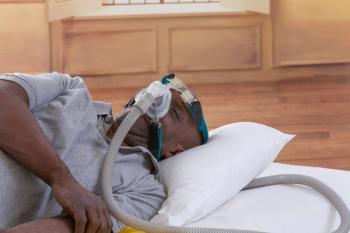
In Fairness to Seniors, Observation Status Should Be Eliminated
Placing seniors on observation status appears to be a tactic to avoid adding to a hosptial's readmission rate, but it hurts seniors financially.
In fairness to our senior population, hospital use of “observation status” to deny Medicare patients benefits and shift costs onto them must change. That’s why I’m heartened to hear that a federal court has ruled that Medicare beneficiaries who have experienced an observation stay can be part of a class action lawsuit against the government.
In reporting on Alexander v. Price, 3:11-CV-1703 (MPS), the
In its ruling, the court cited a study performed by Brown University in 2012 that identified more than 900,000 Medicare patients who were subject to observation stays during 2009 alone. Multiply that by the number of intervening years, and we’re talking about the potential for millions of potential plaintiffs.
Undue financial burden on seniors
Obviously, the biggest concern for most patients who stay in the hospital for 3 days is the qualification of a nursing home stay following discharge. But that’s not the only unfair financial burden that observation stays can place on Medicare beneficiaries.
There are differences among costs and co-pays for medications and hospital services between hospital inpatients and those on observation status, as noted by a recent report from the Office of Inspector General, part of the Department of Health and Human Services.
These factors contribute to an unnecessary financial burden on Medicare patients, delivered at the same time they’re trying to recover from a surgery or injury or rehab. However, the certification of class action status means that this woman and hundreds of thousands of other Medicare beneficiaries who have been to the hospital on observation status can be part of the lawsuit.
The Center for Medicare Advocacy has been on the forefront of this issue. Commenting on the July 31 decision, Alice Bers, litigation director, said, “The decision recognizes that Medicare patients across the country face dire situations, including having to choose between spending thousands of dollars on nursing home care or simply forgoing that necessary care. We look forward to establishing that the right to review is required as a matter of constitutional due process.”
Different scenarios, different co-pays
If it walks like a duck and quacks like a duck, then it must be a duck, right? If you’re in the hospital for several days, then you must be an inpatient. Not necessarily, in Medicare’s thinking.
But the classification between inpatient and “observed” outpatient can make a critical difference in how—and how much—of a patient’s hospital stay is covered by Medicare. Hospital admissions are covered by Medicare Part A, while outpatient observation is covered by Medicare Part B. So, if someone without Medicare Part B has an observation status hospital stay, that person could be responsible for the entire bill.
How is a patient even to know that she hasn’t been admitted to the hospital if she’s receiving care in a hospital bed, receiving IV fluids, tests and treatment? The distinction is critically important because patients have a greater cost share for prescribed medications and other hospital services delivered as an outpatient. They also can’t qualify for covered skilled nursing services without a 3-day hospital stay. That adds up to a lot of money for a lot of seniors.
Responding to a 2015 article on the topic on the
Other reasons could include physician interpretation of Medicare rules that require observation status for stays of fewer than 2 midnights and hospital or physician belief that a patient can be essentially treated as an outpatient, but with enhanced monitoring.
Regardless of the reason for an observation stay, the
Observation status has no effect on readmissions
A large study of more than
The study outlines four key findings:
- Readmissions rates started to fall faster following the passage of the Affordable Care Act in April 2010 and then slowed (but continued to fall) between October 2012 through May 2015.
- Readmissions for conditions targeted for penalties by the ACA fell faster than readmissions for other conditions.
- The use of observation status increased for both targeted and nontargeted conditions.
- No association was seen between the increased use of observation status and the decrease in hospital readmissions.
In summarizing their findings, the authors “did not see large changes in the trends of observation-service use associated with the passage of the ACA, and hospitals with greater reductions in readmission rates were no more likely to increase their observation-service use than other hospitals.”
So, it’s not a question of providing better care or worse care, because readmission rates were no higher or no lower for those on observation status that those classified as inpatients. It is, however, a matter of fairness to our seniors. Using smoke and mirrors to differentiate between what appear to be identical hospital stays unfairly pushes the burden onto Medicare beneficiaries and should stop—now.
About the Author
Andria Jacobs, RN, MS, CEN, CPHQ is the chief operating officer for PCG Software and has more than 25 years’ experience in the healthcare industry, encompassing both administrative and clinical arenas. Prior to joining PCG, Ms Jacobs was the administrative director, medical management for VertiHealth Administrators. Previously, she was an independent consultant in ambulatory care and practice management, where her clients have included hospitals, physician groups, and the University of California, Los Angeles.
Newsletter
Stay ahead of policy, cost, and value—subscribe to AJMC for expert insights at the intersection of clinical care and health economics.













































